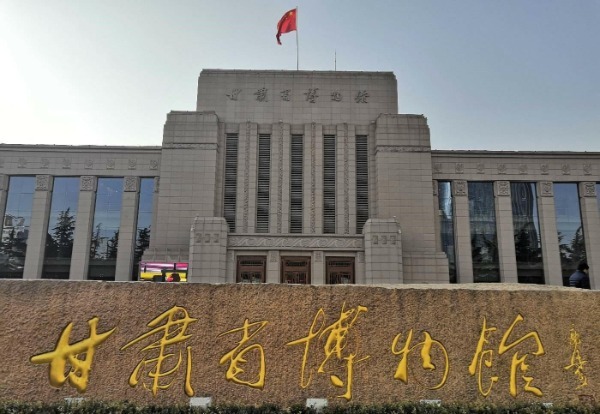Qilihe museums reveal their riches to the world
On the occasion of the International Museum Day on May 18, nine museums in Northwest China's Gansu province held an online activity from May 9 to 18, showcasing their collections and educating the public about cultural relic protection.
Qilihe district of Lanzhou was a major participant in the culture banquet. Boasting rich cultural resources, several museums there revealed the origin and evolution of Chinese civilization.

The Gansu Provincial Museum [Photo provided to chinadaily.com.cn]
Gansu Provincial Museum is one of the earliest comprehensive museums established in China. The museum has over 80,000 pieces of artifacts and natural specimens, including 686 first-grade cultural relics and 16 national treasures. In particular, ancient painted pottery of the Neolithic Age, bamboo slips of Han Dynasty, Buddhist art treasures and paleontological fossils are popular among museum visitors.
The Memorial Hall of Lanzhou Campaign is a national key martyrs' memorial facility commemorating PLA soldiers who died for liberation of the city in 1949. Offering firsthand information for the historical moment for Northwest China, the memorial hall plays an important role in patriotism education nationwide.
The Gansu Bamboo Slips Museum, still being constructed in Qilihe, plans to display about 1,500 antiques unearthed from important remains. Digital films will also be prepared to showcase the discovery process of bamboo slips in Gansu and along the Silk Road of Han Dynasty.
The Gansu Fushen Folk Culture Museum, a private enterprise established in 2016, has collected more than 24,000 pieces of cultural relics in 11 categories, including local farming culture, intangible cultural heritage and red culture. It is a vital platform for research on folk culture along the Yellow River Basin.
-
As AI encounters Dunhuang's art, the ancient caisson ceiling bridges centuries to the present.
View all stories

 Gansu thrives from green development
Gansu thrives from green development  >
>